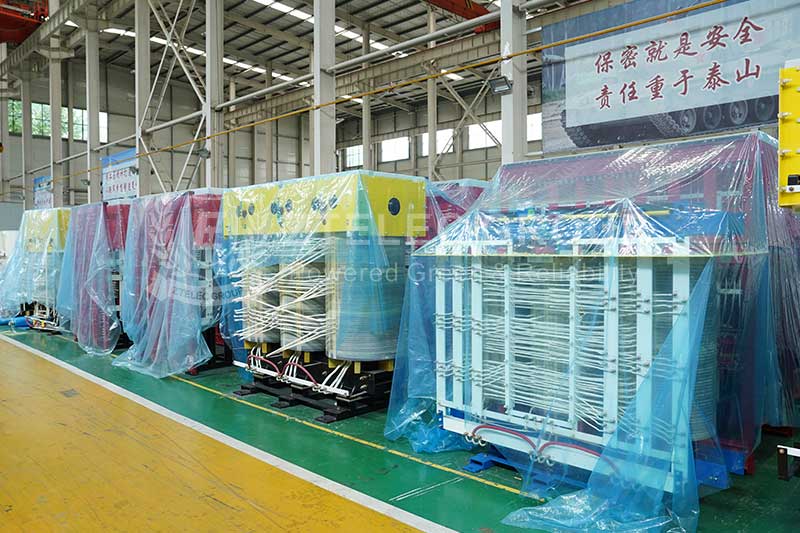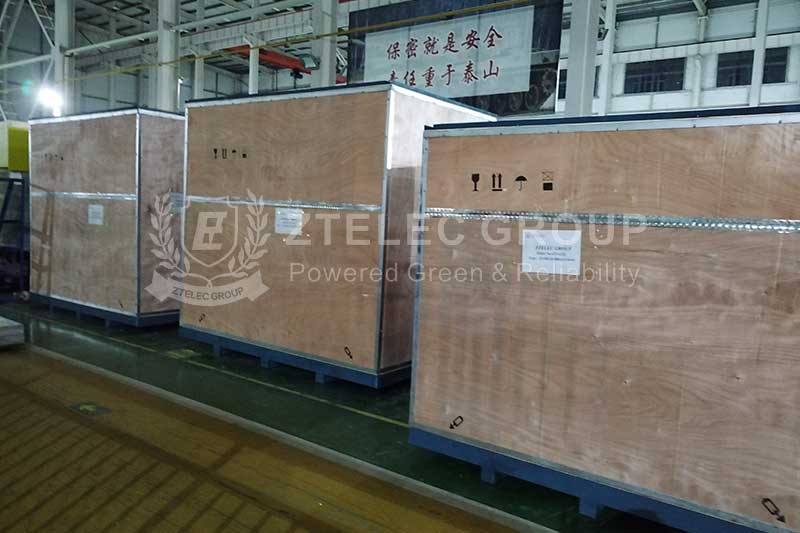1. The electromagnetic wire selected based on the static theoretical design of the dry transformer has a great difference from the stress acting on the electromagnetic wire during actual operation.
2. At present, the calculation procedures of various manufacturers are based on the idealized models such as the uniform distribution of leakage magnetic field, the same diameter of the coil, and the equal phase force. However, in fact, the leakage magnetic field of the transformer is not evenly distributed. The iron yoke part is relatively concentrated, and the electromagnetic wire in the area is subject to a large mechanical force; the transposition wire at the transposition position will change the force transmission direction due to climbing, and generate a torque; due to the elastic modulus factor of the spacer, the axial direction The uneven distribution of the spacers will cause the alternating force generated by the alternating magnetic leakage field to delay resonance. This is why the line cakes at the core yoke, the transposition, and the corresponding parts of the pressure taps are first deformed. root cause.
3, the oil-immersed transformer anti-short-circuit capability calculation does not consider the temperature of the electromagnetic wire bending and tensile strength. The short-circuit resistance designed at room temperature does not reflect the actual operation. According to the test results, the temperature of the magnet wire has a great influence on its yield limit 0.2. With the increase of the temperature of the magnet wire, its bending strength, tensile strength and elongation rate Both decreased, the bending strength at 250°C decreased by more than 10% at 50°C, and the elongation decreased by more than 40%. The actual operation of the transformer, under rated load, the average winding temperature up to 105 °C, the hottest point temperature up to 118 °C. Normally, the transformer is re-closed during operation, so if the short-circuit point cannot be eliminated for a short time, it will be followed by a second short-circuit shock in a very short time (0.8s), but due to the impact of the first short-circuit current, The temperature of the winding increases sharply. According to the provisions of GBl094, the maximum allowable temperature is 250°C. At this time, the short-circuit resistance of the winding has been greatly reduced. This is why most of the short-circuit accidents occur after the reclosing of transformers.

4. The use of soft wires is also one of the main reasons for the poor resistance of transformers to short circuits. Due to the lack of early understanding of this, or the difficulty of winding equipment and processes, manufacturers are reluctant to use semi-rigid wire or no requirement for this in design. From the point of failure of the transformer, they are all soft wires.
5, winding winding loose, transposition or corrective position at the wrong place, too thin, resulting in the electromagnetic wire hanging. From the point of view of accident damage, deformation is more common at the transposition, especially at the transposition of the transposed conductor.
6. The winding wire or the uncured wire between conductors has poor resistance to short circuit. None of the early dip-lacquered windings were damaged.
7. Special transformers adopt common transposed conductors, which have poor resistance to mechanical strength. They are prone to deformation, loose strands and exposed copper when subjected to short-circuit mechanical forces. When using common transposed conductors, due to the large current, the steep slope of the transposition will produce a large torque at this part, and at the same time, the line cakes at the two ends of the windings will also produce a combination of axial and axial leakage magnetic fields. Larger torque causes distortion. For example, Yang Yang's 500 kV transformer has a total of 71 transpositions in the A-phase common winding. Due to the use of thicker transposed conductors, 66 transpositions have varying degrees of deformation. In addition, the No. 1l main change of Wusong is also due to the phenomenon that the high-voltage winding two-end line cake in the yoke part of the iron core has different flipping dew lines due to the use of ordinary transposing wires.












Leave A Comment